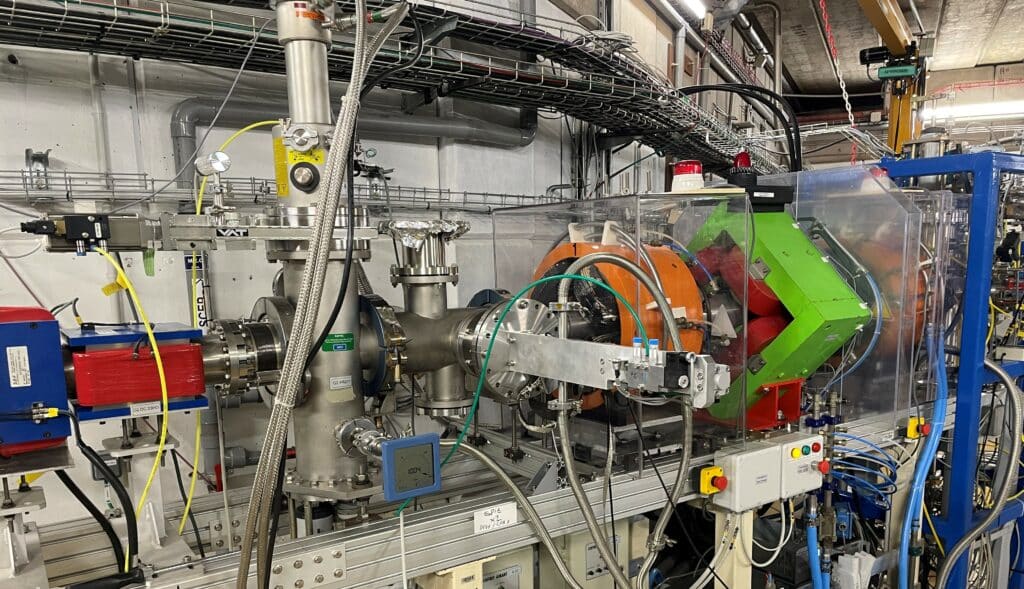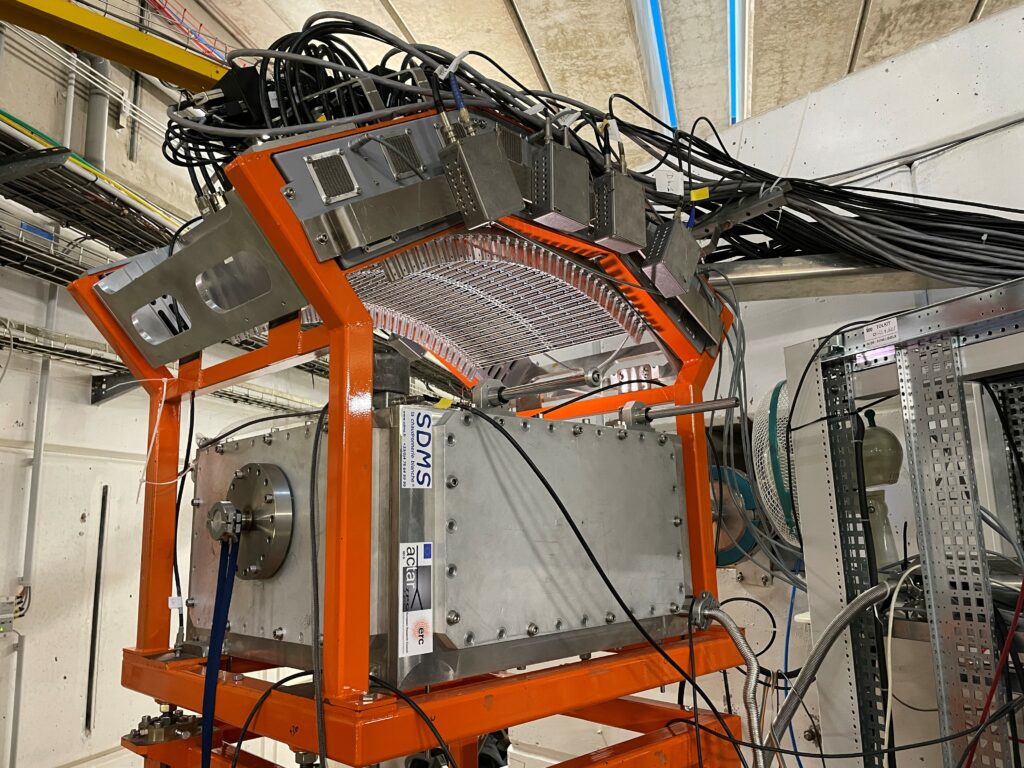- Homepage
- >
- Scientists
- >
- News & Highlights
- >
- 2024
- >
- GANIL expands its energy range to reach for the stars
GANIL expands its energy range to reach for the stars
A GANIL beam line was completely redesigned to transport low-energy radioactive beams (1 to 2 MeV/u), a range of new energies for GANIL radioactive ions. The new device allows to slow down the beams of the CIME cyclotron while measuring the energy of each particle with high precision. With this new device, SPIRAL1’s ion beams have an energy close to that found in stars. It is then possible to reproduce as closely as possible the conditions of stellar nuclear reactions.
In particular, the first experiment with this device took place in June 2024. Its goal, thanks to the active target ACTAR_TPC, was to improve the precision of the measurement of the cross-section 8Li(alpha,n)11B. This cross-section is only known with an accuracy of 50%, and yet it plays an important role in several astrophysical scenarios, from primordial nucleosynthesis to neutron star mergers.
The icing on the cake is that the device allowed to study as well the excited states of the compound nucleus, 12B, whose cluster states are very important to describe very exotic nuclei and understand nuclear interaction.


©GANIL/CEA-CNRS
